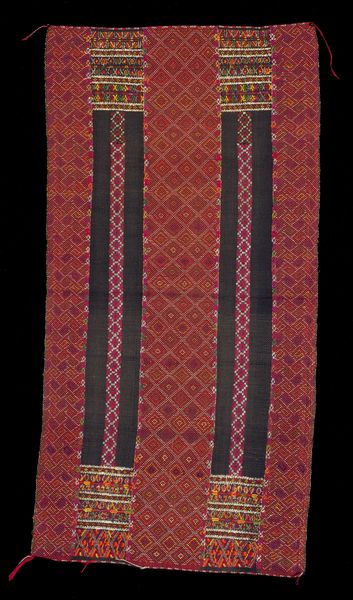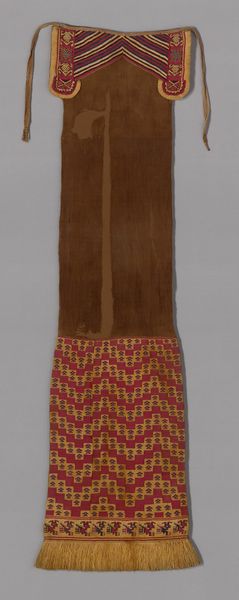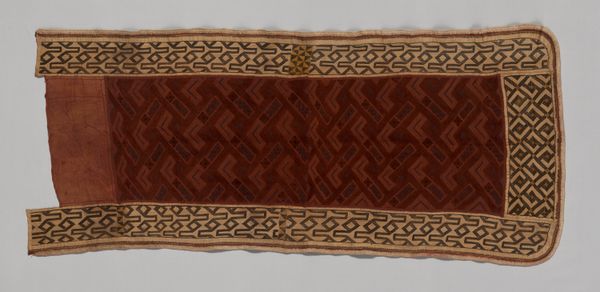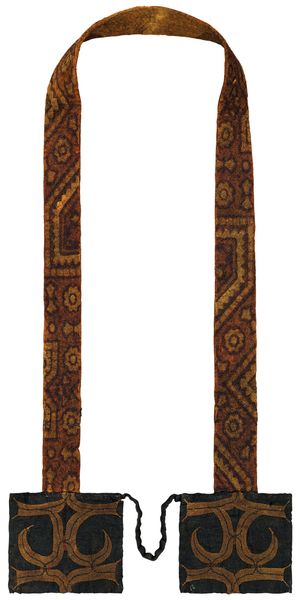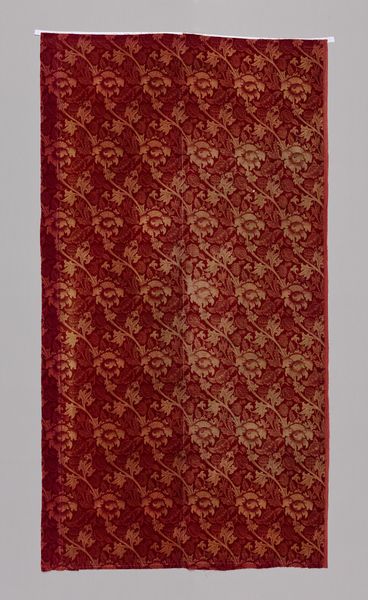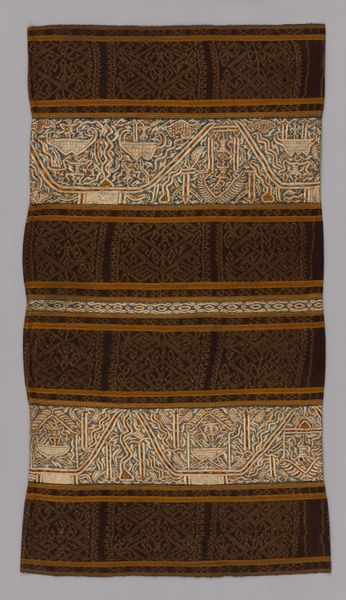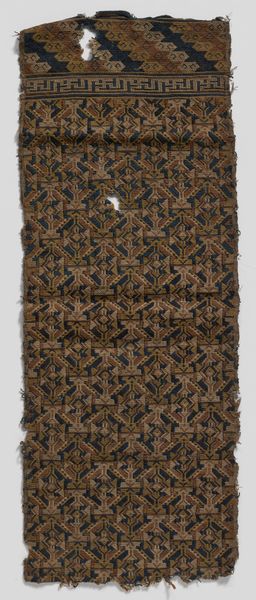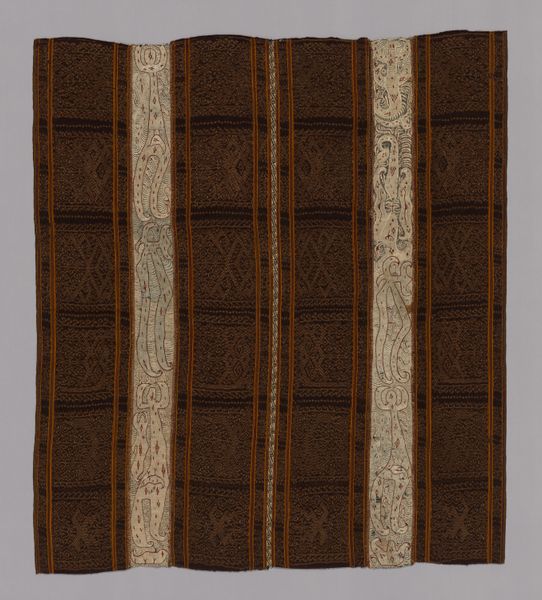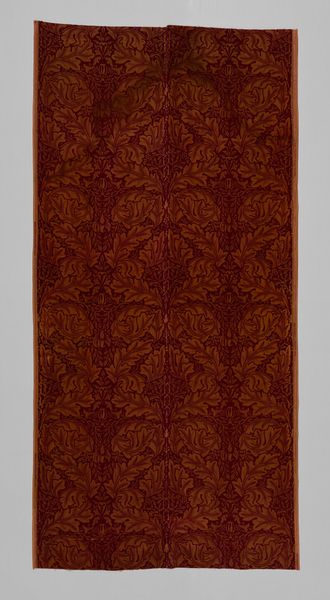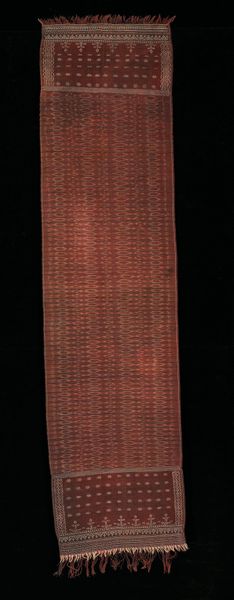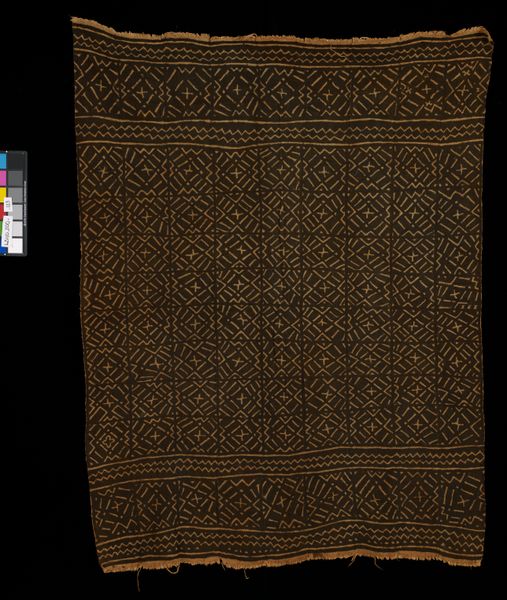
fibre-art, weaving, textile
#
african-art
#
fibre-art
#
weaving
#
textile
#
repetitive shape and pattern
#
geometric
Dimensions: 137.5 × 57.8 cm (54 1/8 × 22 3/4 in.)
Copyright: Public Domain
Editor: Here we have the Woman's Overskirt, dating back to the 19th century, by an artist from the Kuba culture. It’s mixed media, primarily textile and fibre art with weaving, and is housed right here at the Art Institute of Chicago. I am really struck by the density of the geometric patterns, it’s almost hypnotic. How do you interpret this work, beyond its visual impact? Curator: This textile, while seemingly decorative, holds immense cultural weight. We need to consider it beyond aesthetics. As a garment worn by women in Kuba society, the overskirt wasn't just clothing, but a symbol of status and identity. What narratives about womanhood and power do you think are embedded in these repetitive geometric patterns? Editor: So, it's less about pure decoration and more about... coded messages? Are we talking about symbols accessible only to those within the culture? Curator: Precisely. The visual language speaks volumes about the wearer's position within the community. The craftsmanship itself, the weaving techniques and the time invested, speaks to the artistry valued and practiced. Could it also signal resistance or the preservation of cultural memory under colonial pressures? Consider that. Editor: That’s a powerful idea! I hadn't thought about the act of creation as resistance. Are the specific shapes important, or is the overall effect more symbolic? Curator: Both. Zoom in on the variations within the patterns, and reflect upon the history and impact of pattern and decoration, and what the piece communicates when hung on a museum wall, dislocated from its purpose. It provokes dialogues of colonialism, power and indentity through a new lens. Editor: I never considered how displacement can reshape the message. I’m learning there’s always more beneath the surface with works like this. Curator: Exactly, engaging with the skirt and similar objects opens crucial space for reconsidering long-held stereotypes about African Art, focusing instead on women's voices in society, their artistic agency, and complex historical and societal narratives that go far beyond the visual appearance.
Comments
No comments
Be the first to comment and join the conversation on the ultimate creative platform.
